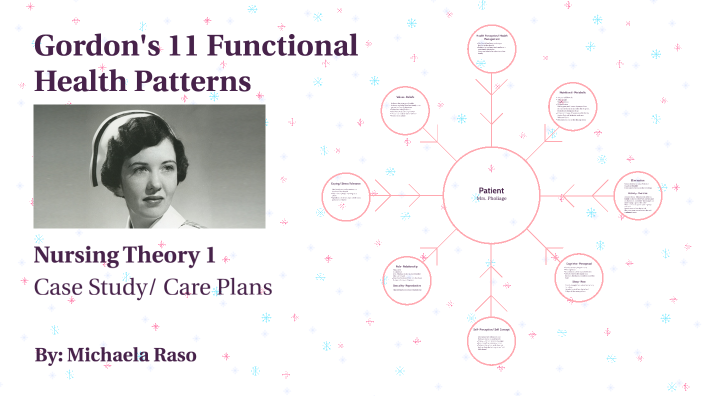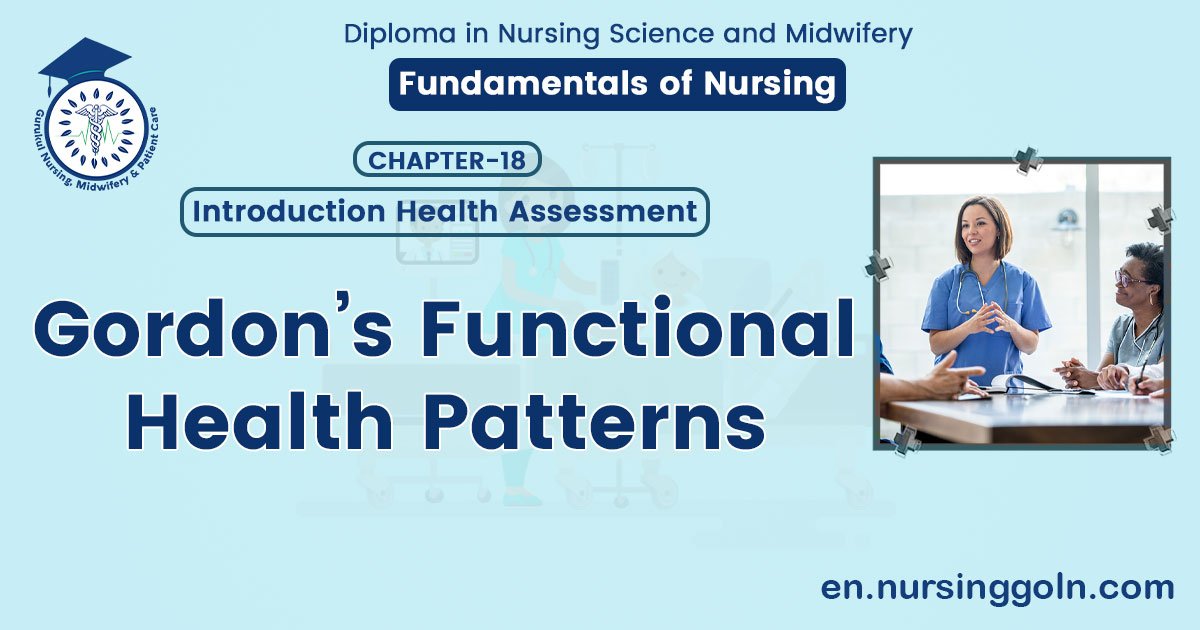Gordon’s Functional Health Patterns – Nursing is a profession within the healthcare sector focused on the care of individuals, families, and communities so they may attain, maintain, or recover optimal health and quality of life. Nurses may be differentiated from other healthcare providers by their approach to patient care, training, and scope of practice. Nurses practice in many specialisms with differing levels of prescriber authority.
Many nurses provide care within the ordering scope of physicians, and this traditional role has shaped the public image of nurses as care providers. However, nurses are permitted by most jurisdictions to practice independently in a variety of settings depending on training level. In the postwar period, nurse education has undergone a process of diversification towards advanced and specialized credentials, and many of the traditional regulations and provider roles are changing.
Nurses develop a plan of care, working collaboratively with physicians, therapists, the patient, the patient’s family, and other team members, that focus on treating illness to improve quality of life. Nurses may help coordinate the patient care performed by other members of an interdisciplinary healthcare team such as therapists, medical practitioners, and dietitians. Nurses provide care both interdependently, for example, with physicians, and independently as nursing professionals.
Gordon’s 11 Functional Health Pattern:
Gordon’s Functional Health Patterns is a method develops By Marjorie Gordon in 1987 proposed functional health patterns as a guide for establishing a comprehensive nursing data base. By using these categories it’s possible to create a systematic and standardized approach to data collection, and enable the nurse to determine the following aspects of health and human function:
1. Health Perception Health Management Pattern
2. Nutritional Metabolic Pattern
3. Elimination Pattern
4. Activity Exercise Pattern
5. Sleep Rest Pattern
6. Cognitive-Perceptual Pattern
7. Self-Perception-Self-Concept Pattern
8. Role-Relationship Pattern
9. Sexuality-Reproductive
10. Coping-Stress Tolerance Pattern
11. Value-Belief Pattern

A. Health Perception – Health Management Pattern
- Describes client’s perceived pattern of health and wellbeing and how health is managed.
B. Nutritional – Metabolic Pattern
- Describes pattern of food and fluid consumption relative to metabolic need and pattern indicators of local nutrient supply.
C. Elimination Pattern
- Describes pattern of excretory function (bowel, bladder)
D. Activity – Exercise Pattern
- Describes pattern of exercise, activity, leisure, and recreation.
E. Cognitive – Perceptual Pattern
- Describes sensory, perceptual, and cognitive pattern
F. Sleep-Rest Pattern
- Describes patterns of sleep, rest, and relaxation.
G. Self-perception-Self-concept Pattern
- Describes self-concept and perceptions of self (body comfory, image, feeling
state)
H. Role-Relationship Pattern
- Describes pattern of role engagements and relationships.
I. Sexuality-Reproductive Pattern
- Describes client’s pattern of satisfaction and dissatisfaction with sexuality pattern, describes reproductive patterns.
J. Coping-Stress Tolerance Pattern
- Describes general coping patterns and effectiveness of the pattern in terms of stress tolerance.
K. Value – Belief Pattern
- Describes pattern of values and beliefs, including spiritual and /or goals that guide choices or decisions.

Ways to Collect Data from a New Patient Followed by Gordon’s Functional Health Pattern
1. Health perception and health management pattern:
- How does the person describe her/his current?
- What does the person do to improve or maintain her/his health?
- What does the person know about links between lifestyle choices and health?
- How big a problem is financing health for this person?
- Can this person report the names of current medications she/he is taking and their purpose?
- If this person has allergies, what does she/he do to prevent problems?
- What does this person know about medical problems in family?
- Have there been any important illnesses or injuries in this person’s life?
2. Nutritional metabolic pattern:
- Is the person well nourished?
- How do there person’s food choices complete with recommended food intake?
- Does the person have any disease that affects nutritional – metabolic function?
3. Elimination Pattern:
- Are the person’s excretory function’s within the normal range?
- Does the person have any diseases of the digestive system, urinary system or skin?
4. Activity & Exercise Pattern:
- How does the person describe her/his weekly patter of activity and leisure, exercise and recreation?
- Does the person have any disease that affects her/his cardio-respiratory system or musculoskeletal system?
5. Cognitive perceptual pattern:
- Does the person have any sensory deficits? Are they corrected?
- Can this person express his/herself clearly and Inno logically?
- How educated is this person?
- Does the person have any disease that affects mental or sensory functions?
- If this has pain, describe it and its causes.
6. Sleep & Rest Pattern:
- Describe this person’s sleep wake cycle.
- Does this person appear physically rested and relaxed?
7. Self-Perception & Self Concept Pattern:
- Is there anything unusual about this person’s appearance?
- Does this person seem comfortable with her/his appearance?
- Describe this person’s feeling state.
8. Role Relationship Pattern:
- How does this person describe his/her verities roles in life?
- Has, or does this person now have positive role models for these roles?
- Which relationships are important to this person at present?
9. Sexual Reproductive Pattern:
- Is this person satisfied with her/his situation related to sexually?
- How have the person’s plans and experience matched his/her goals regarding having children?
- Does this have any disease /dysfunction of reproductive system?
10. Pattern of Coping & Stress Tolerance
- How does this person usually cope with problems?
- Does this action help or make things worse?
- Has this person had any treatment for emotional distress?
11. Pattern of Values & Beliefs:
- What principles did this person learn as a child that is still important to her/him?
- Does this person identify with any cultural, ethnic, religious or other groups?
- What support system does this currently have?

Read More…
